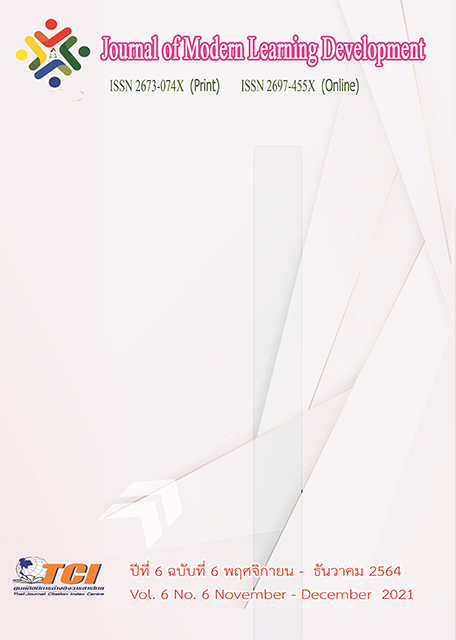The Behavior of Farmers' Safe Vegetables Production in Na Siaw Sub-District, Mueang District, Chaiyaphum Province
Main Article Content
Abstract
The objectives of this research were 1) to study knowledge, understanding and production practices of safe vegetable farmers in Na Siew Sub-District, Muang District, Chaiyaphum Province; 2) to study decision-making conditions. expanding the production and marketing of safe vegetables in Na Siew Sub-District; and 3) studying the guidelines for developing and promoting the production behavior of safe vegetables among farmers in Na Siew Sub-District. The sample consisted of 30 farmers in Na Siew which were obtained by specific purposive sampling from farmers in Na Siew Sub-District, Muang District, Chaiyaphum Province. who voluntarily participate in the project The research instruments were 1) a questionnaire on the production behavior of safe vegetables of farmers 2) a survey and an observation form on the production of safe vegetables of the farmers 3) Interview form for general information of the area physical environment. The data were analyzed using mean and standard deviation of scores by using basic statistics (mean, over standard deviation), data obtained from in-depth interviews and focus group discussions by content analysis. ) and farmers' satisfaction with data analysis training using basic statistics.
The results of the research found that
1. Most farmers have a good understanding of safe vegetable production Has 11-15 years of experience in growing safe vegetables. The top 5 most popular vegetables are Chinese morning glory, sweet basil, sweet corn and kale.
2. Farmers have a need to continue to produce safe vegetables. In the future, there will be more planting areas in order to grow a variety of vegetables to meet the needs of the consumer market. adding more distribution channels
3. Approaches for developing and promoting safe vegetable production behaviors of farmers in Na Siew sub-district include 4 approaches: 1) develop and expand a broad network; 2) develop the production potential of the network; 3) develop cooperation with other agencies. external organizations; and 4) promoting and raising awareness among youth.
Article Details
References
กรมส่งเสริมการเกษตร. (2557). การผลิตพืชผักปลอดภัย. กรุงเทพมหานคร: โรงพิมพ์ สำนักพัฒนาการถ่ายทอดเทคโนโลยี
ดุษฎี พรหมทัต. (2554). รายงานการวิจัยเรื่องความตระหนักของเกษตรกรในการใช้สารเคมีในจังหวัด
พระนครศรีอยุธยา. พระนครศรีอยุธยา: มหาวิทยาลัยเทคโนโลยีราชมงคลสุวรรณภูมิ
วราภรณ์ ปัญญาวดี. (2551). การขับเคลื่อนสู่วิถีเกษตรปลอดภัยจากสารพิษ กรณีการปลูกพืชผัก. วารสารเศรษฐศาสตร์ธรรมศาสตร์. 26 (1), 107–127.
อินทุราภรณ์ มงคลขจรกิตติ และ สมศักดิ์ มงคลขจรกิตติ. (2560). การพัฒนากระบวนการผลิตดาวเรืองเพื่อเข้าสู่มาตรฐานเกษตรอินทรีย์ของเกษตรกรจังหวัดชัยภูมิ. รายงานวิจัย. คณะรัฐศาสตร์ มหาวิทยาลัยราชภัฏชัยภูมิ.
Geels,F.W.2002. Technological Transitions as Evolutionary Reconfiguration Processes: A Multi-level Perspective and A Case-study. Research Policy 32, 1257–1274.
Gonsalves, J., T. Becker, A. Braun, D. Campilan, H. De Chavez, E. Fajber, M. Kapiriri, J.
Rivaca-Caminade and R. Vernooy (eds). (2005). Participatory Research and Development for Sustainable Agriculture and Natural Resource Management. A Sourcebook Volume 1: Understanding Participatory Research and Development. International Potato Center-Users’ Perspectives with Agricultural Research and Development, Laguna, Philippines and International Development Research Center, Ottawa, Canada.
Sayers, R. (2006). Principles of Awareness Raising: Information literacy, a case study. UNESCO Bangkok, 124 pp.


